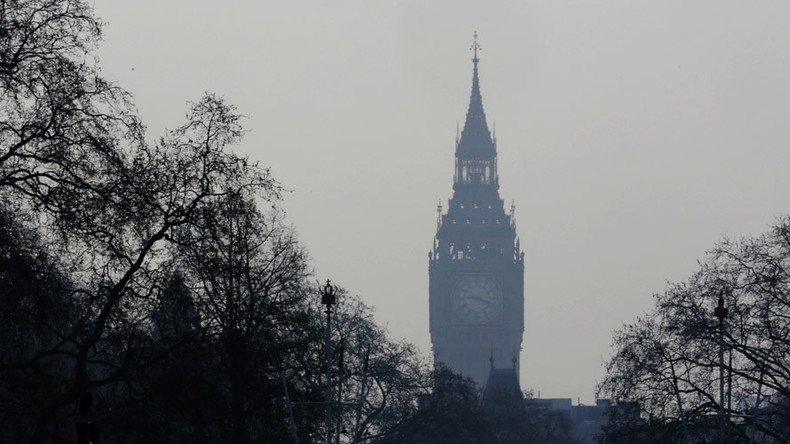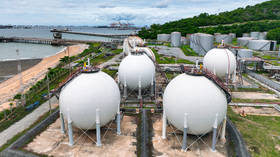London breaks EU air pollution limits for 2016 in ‘just 8 days’

New figures show London has exceeded its air pollution limits for the entire year – in just eight days, according to a monitoring and research group.
European air-quality rules say levels of hourly nitrogen dioxide (NO2) are not to breach the maximum limit for more than 18 hours per year.
However Putney High Street became the first place in London to reach its 19th hour of exceeding the limit during Friday morning’s rush hour, according to the King’s College organization London Air Quality Network.
In 2015, Oxford Street breached its limits for the year in just two days. It would most likely have been first to break the legal objectives for this year too, if the monitoring equipment wasn’t currently being repaired.
READ MORE: Trump Force One! Tycoon fined for air pollution by British Environment Agency
High levels of the toxic gas are emitted from diesel exhaust fumes, a recent study found that exposure to the fumes can significantly impact people with asthma.
Researchers at Imperial College London found that both during and after a two hour walk along Oxford Street, volunteers experience increased asthmatic symptoms like reduced lung capacity and inflammation in the lungs.
After a few hours the symptoms did return to their normal levels, however these harmful gases are blamed for nearly 9,500 premature deaths in London annually.
I’ve been on Putney High Street with an air pollution monitor. We must clean up London's filthy and dangerous air.
https://t.co/PbGSjaxrgS
— Sadiq Khan MP (@SadiqKhan) January 10, 2016In general, vehicle exhausts are only responsible for a third of traffic pollution, according to a study published in Atmospheric Environment.
The study goes on to say that of that traffic pollution, nearly half of it comes from “non-exhaust sources like brake wear, road-surface wear and particles whipped up from the road by passing vehicles”.
“As exhaust regulations become stricter, non-exhaust sources become proportionately more important. Continuing to control exhaust emissions alone may not be enough to achieve legal air-quality standards”, said Professor Ranjeet Sokhi, of the University of Hertfordshire, who led the study.
The breach comes just weeks after the government announced its plan to purify the UK’s air.
After violating the EU NO2 limits five years in a row, the UK was ordered by the supreme court to publish an action plan to tackle the problem. A government plan was published in December 2015, however the near future still looks foggy.
READ MORE: Eco-hypocrisy? Cameron tells business to act on climate change... but scraps green agenda
Private passenger cars were made exempt from the plan which means UK cities including London, Birmingham, Leeds, Liverpool, Cardiff and Edinburgh will breach EU air pollution limits for the the next five years at least.
Under the new plan, the government aims to declare Birmingham, Leeds, Nottingham, Derby and Southampton ‘clean air zones’ by 2020. As such, owners of older, less economic, buses, coaches, taxis and trucks will have to pay a fee to enter.
However, privately-owned passenger vehicles – which make up 88 percent of the UK’s motor fleet -will not have to pay the charge.













